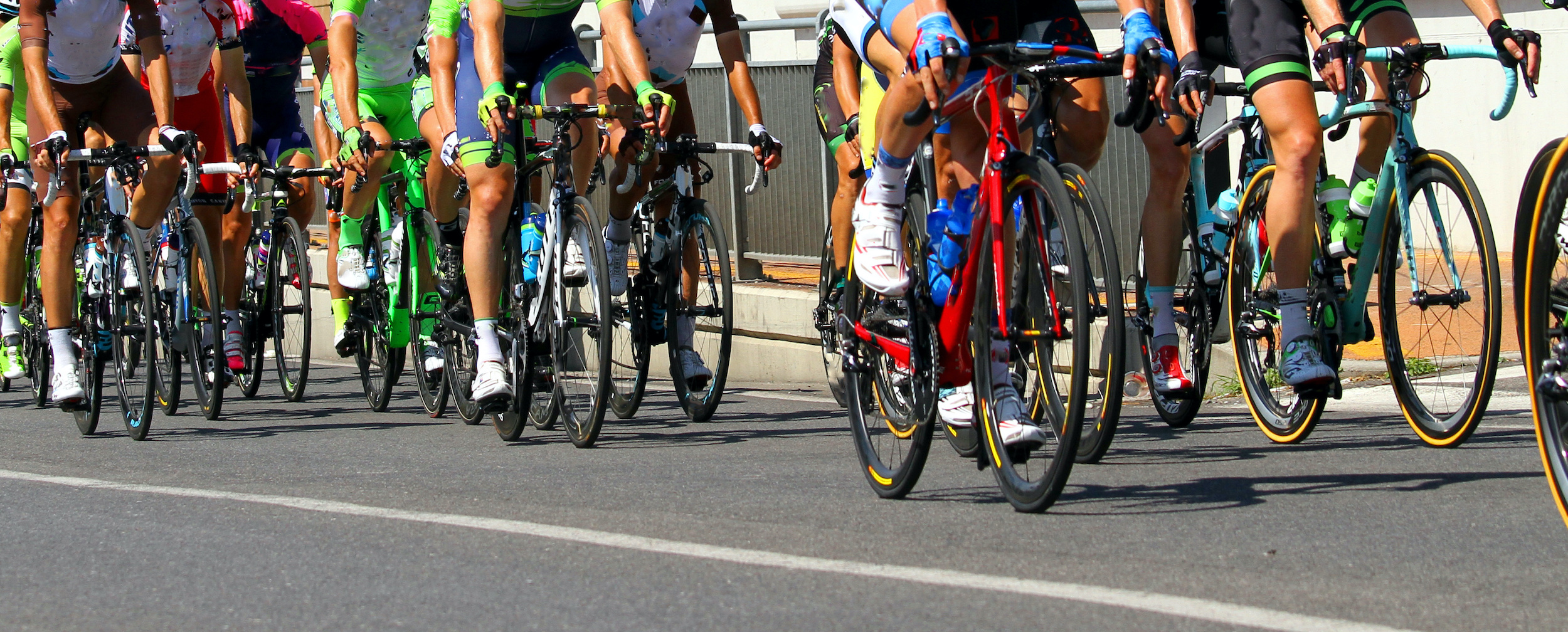Are you a fan of the Giro d’Italia or would you prefer to do your own “tour of Italy”? Either way, the Giro d’Italia has always something to offer and we have decided to gift you with a themed vocabulary section!
The Giro d’Italia is one of the three Grand Tours, along with the Tour de France and the Vuelta a España. The 105th edition of the Giro d’Italia started on Friday, May 6, in Budapest, Hungary and ends on Sunday, May 29 in Verona. This three-week tour brings both riders and viewers all around Italy. And that’s one of the reasons why the Giro is so fascinating, now more than ever. Another attraction is the variety of Italy’s terrain, which undoubtedly poses different challenges to different riders. In short, we love it because of the exciting competition and the enchanting and ever-changing landscape, happening all at once.
The origins of the Giro d’Italia and the pink jersey

Milan, where everything began
The first edition of the Giro d’Italia, won by Luigi Ganna, was held in 1909 and it was an idea of the editors of Italian sports newspaper La Gazzetta dello Sport. For half a century, this prestigious bicycle race started and finished in Milan, which hosted La Gazzetta’s headquarters. In more recent times, the city of departure has changed every year, but the Giro usually ends in Milan. Despite being the first to win the competition, Luigi Ganna was not the first to wear the maglia rosa.
Actually, the pink jersey for the race’s leader was introduced in 1931 and was awarded to Learco Guerra. It was another idea of the Milan-based newspaper, which is still printed on pink pages, conceived to make the leader easier to identify both by race officials and fans, and it has since become a symbol of the Giro d’Italia. Currently, the riders who have worn it the most are Eddy Merckx, Fausto Coppi and Alfredo Binda, who won the general classification five times.
To celebrate the 700th anniversary of Dante’s death, last year’s maglia rosa had the final words of the Purgatorio written on the inside of the collar: “Disposto a salire alle stelle” (“ready to climb to the stars.”) And that’s not all, RCS Sport, started in 1989 as an independent company from La Gazzetta dello Sport, has created a virtual exhibition dedicated to the 90th anniversary of the pink jersey.
The other jerseys and their meaning

A photo taken in Santa Ninfa, in Sicily, during the Giro d’Italia (2018)
Jerseys of different colors are awarded to the leaders of different classifications at the end of every stage, and the recipients earn the right to wear them during the following day’s racing. Of course, the most coveted jersey is the maglia rosa, worn by the overall classification leader. The points jersey, or maglia ciclamino, is purple/magenta and goes to the most consistent rider. In Italian, ciclamino is a colour and a flower, cyclamen.
The maglia azzurra (‘blue jersey’) is awarded to the best climber, the leader of the mountains’ classification. To accumulate the most points in this category, it is very important to take the Cima Coppi, where you can get 50 points. Named after Fausto Coppi, this the highest point of the race. The Cima Coppi changes every year and, as the Dolomites’ stage was shortened due to bad weather, Passo Giau (2,233 m) replaced Passo Fedaia and Passo Pordoi (2,239 m) as this year’s Cima Coppi. The last jersey available is white and goes to the best young rider (under 25): the maglia bianca.
Our short guide to cycling lingo

What’s the Italian for ‘saddle’?
The 105th edition of the Giro d’Italia is drawing to a close but it’s always time to learn Italian. Read on and you’ll learn how to decode the jargon of this fascinating race.
Athletes and other people
gruppo: group of riders, peloton
corridore: racer
squadra: you will often hear ‘team’
direttore sportivo: directeur sportif
tifosi: fans, supporters. Interesting fact: the term tifoso derives from the delirium of typhoid patients
giudice di gara: race judge
fuggitivo: breakaway rider
gregario: domestique, the rider that supports his team and leader rather than trying to win the race
discesista: a great descender
passista: rouleur, a strong rider good on long flat stages
scalatore: climber, a rider who excels on steep, high mountains
scattista: a sprinter who can accelerate on the steepest slopes
velocista: a sprinter
Remember that a rider may have several characteristics, hence two terms can be combined. A typical example is passista scalatore: a rouleur who climbs well, a good all-rounder; famous all-rounders include Fausto Coppi and Eddy Merckx. On the contrary, if the rider is a specialist, we add the adjective puro (e.g., scalatore puro)
The race
classifiche generali: general classifications
colle: a hill, or short climb
discesa: descent
pendenza: gradient or slope
salita: climb
tornante: switchback
cronometro individuale: individual time trial
cronometro a squadre: team time trial
cronoscalata: individual timed hill climb
percorso: route
tappa: stage
tappone: the hardest stage in the high mountains. You may have heard about il tappone dolomitico, for example
traguardo: finish line
volata: sprint finish
zona rifornimento: feed zone
Parts of the bike
bloccaggio: quick release skewer
borraccia: water bottle
cambio: rear derailleur
camera d’aria: inner tube
catena: chain
cerchio: rim
comandi: shift/brake levers
copertoncino: clincher tire
deragliatore: front derailleur
forcella: fork
forcellini: front and rear dropouts
freni: brakes
guarnitura: crankset
manubrio: handlebar
movimento centrale: bottom bracket
mozzo: hub
pedali: pedals
pignoni: sprockets
portaborraccia: bidon cage
raggi: spokes
reggisella: seatpost
ruote: wheels
sella: saddle
serie sterzo: headset
telaio: bike frame
tubolare: tubular tire
Don’t miss the final stages on RAI, Eurosport, GCN+, and check giroditalia.it for updates and interesting facts


